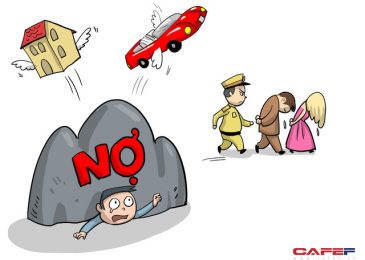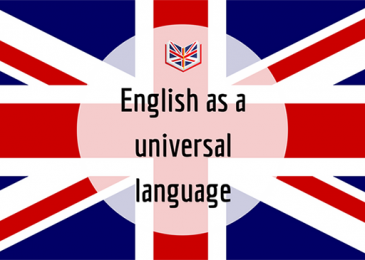 AA: I’m Avi Arditti with Rosanne Skirble, and this week on Wordmaster: we talk with English teacher Nina Weinstein about some expressions in spoken American English that you might not find in a dictionary.
AA: I’m Avi Arditti with Rosanne Skirble, and this week on Wordmaster: we talk with English teacher Nina Weinstein about some expressions in spoken American English that you might not find in a dictionary. RS: But if you are a good listener, you’ll hear them. They give people time to think while helping connect one thought to the next.
NINA WEINSTEIN: “One of the useful links, I think, is the expression ‘let’s see,’ which means ‘let me think.’ Often my students will use a kind of word like that from their own language. And so they’ll be speaking Japanese or Spanish or whatever with their linking word and THEN they’ll continue the rest of the sentence in English. And so I give them ‘let’s see’ as a way to bridge their thoughts and also give them time to think.”
AA: “‘Let’s see’ also has a meaning in itself, though, too, doesn’t it? Where, for example, you’re not sure which way you’ve decided on something so you’ll say ‘OK, let’s see’ — let’s see what happens. ‘Let’s see.'”
NINA WEINSTEIN: “I think you’re right. I think it could indicate that you’re not sure of the answer. It has a lot of meanings. And a lot of these have dual meanings, like the simple expression ‘uh huh.’ Uh huh can mean that we’re listening to what the person is saying, so this is a way of keeping them talking. It can also mean yes, or it can be pronounced ‘um hmm.'”
RS: “What about no?”
NINA WEINSTEIN: “‘Unh unh.’ And my students often have a problem distinguishing between uh huh and unh unh.”
AA: “Give us an example of how to use them correctly.”
NINA WEINSTEIN: “‘Do you want to go to the movie?’ ‘Uh huh.’ Do you think that the movie will start after nine?’ ‘Unh unh.'”
RS: “You say your students have trouble distinguishing between the two?”
NINA WEINSTEIN: “Right.”
RS: “Now, do you reinforce them with facial expressions or shaking your head, or nodding your head [yes] or shaking your head no?”
NINA WEINSTEIN: “I talk about the beat. If you listen to ‘uh huh,’ the accent is on the second syllable. If you listen to ‘unh unh,’ it’s equal. So ‘unh unh’ is more staccato. And I tap my hand on the desk to kind of reinforce this. And then I usually asked them if they sing karaoke or something like that, so they get the idea of the beat. But I don’t sing for them!”
AA: “Unh unh.”
RS: “So you give them a couple of examples and they’re tapping out on their desk whether it’s yes or no?”
NINA WEINSTEIN: “Exactly.”
RS: “I want to go back to unh unh, uh huh and a third one, ‘uh oh.'”
NINA WEINSTEIN: “Uh oh.”
RS: “They sound very similar. We have three here and if you could go over them again for us, I think that would be very useful because they sound so similar, but they’re used in such different contexts.”
NINA WEINSTEIN: “Well, I think if we look at the rest of the sentence or listen to the rest of the sentence, that gives us a big clue. If someone asks a question and the answer is uh huh, then it has to be either yes or no, so that pretty much narrows it. If there’s a situation — for instance, if a person spills some coffee or something like that, and the person says ‘uh oh,’ I think there’s a kind of feeling that the situation gives us that something bad has happened, and uh oh means ‘oh no,’ there’s a problem, something bad has happened, there’s trouble or something like that. So often the situation will give us the idea.”
AA: “It’s a synonym for ‘oops,’ right?”
NINA WEINSTEIN: “It can be oops. We also say ‘whoops.'”
AA: “What about a word like ‘hey’?”
NINA WEINSTEIN: “Hey is actually a conversational strategy and it’s used to draw attention to what you’re talking about: ‘Hey, did you see the movie on Channel 3 last week?’ So I can delete the hey and still have a good sentence, but hey adds a kind of attention focus to the sentence.”
RS: “What would you suggest to do to teach these things? Is it just to listen a lot?”
NINA WEINSTEIN: “I think that often what I read in the literature is a kind of lumping together of all of these strategies. But just in what we’ve spoken about today, you can see that they’re very complicated, or they can have multi-purposes, each one. So I think that we need to give students systematic practice in hearing them and in distinguishing when the differences can be confusing, such as uh huh/unh unh.”
AA: Nina Weinstein is an English teacher in Southern California and author of the book “Whaddaya Say? Guided Practice in Relaxed Speech.” She’s put together a list of conversational strategies including the ones we talked about today, which we’ll post on our Web site, voanews.com/wordmaster.
RS: And that’s Wordmaster for this week. Our e-mail address is word@voanews.com. With Avi Arditti, I’m Rosanne Skirble.
MUSIC: “Uh Huh Oh Yeh”/Paul Weller.
(Source: VOA/WORDMASTER)

DienDan.Edu.Vn Cám ơn bạn đã quan tâm và rất vui vì bài viết đã đem lại thông tin hữu ích cho bạn.DienDan.Edu.Vn! là một website với tiêu chí chia sẻ thông tin,... Bạn có thể nhận xét, bổ sung hay yêu cầu hướng dẫn liên quan đến bài viết. Vậy nên đề nghị các bạn cũng không quảng cáo trong comment này ngoại trừ trong chính phần tên của bạn.Cám ơn.







